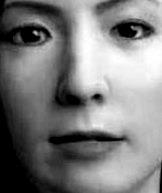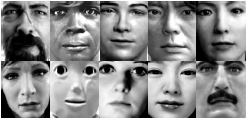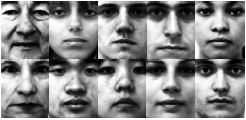« Back to Projects list

A Visual Processing Approach to Exploring Believability of Android Faces
The issue of believability is core to android science, the challenge of creating a robot that can pass as a near human. While researchers are making great strides in improving the quality of androids and their likeness to people, it is simultaneously important to develop theoretical foundations behind believability, and experimental methods for exploring believability. In this project, we explored a visual processing approach to investigating the believability of android faces.
We conducted a response time experiment to compare current-generation android faces to humans's faces.
The following image is the set of stimuli;
Android faces:

Human faces:

We observed that:
- People can classify human faces faster than android faces.
- People perceived android faces eerier than android faces.
- Poeple had more error rates on android faces than human faces when classifying them.
- The accuracy was 43% for android faces and 90% for human faces.
Project Publications
More Human than Human? A Visual Processing Approach to Exploring Believability of Android Faces
Masayuki Nakane, James E. Young, and Neil D. B. Bruce. "More Human than Human? A Visual Processing Approach to Exploring Believability of Android Faces." In the proceeding of the 2nd ACM International Conference on Human-Agent Interaction, 2014.






